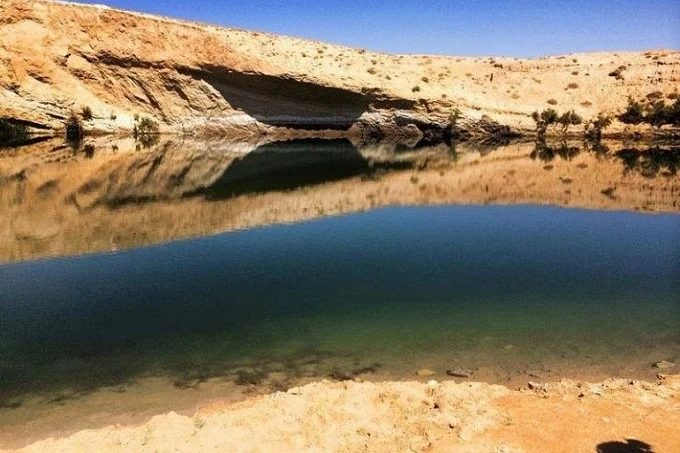Lac de Gafsa, popularly known as the ‘Mysterious Lake,’ came out of nowhere in 2014 along Om Laryes Road, 25 kilometers from Gafsa, Tunisia.
Mehdi Bilel, a Tunisian native, was going home from a wedding in the north when he came upon a vast lake in the midst of the scorching desert. It took place roughly 25 kilometers outside of Gafsa. Mehdi paused on the beach, speechless since the lake was not there only a few days before.
He first assumed it was a hallucination since he had been forced to walk for lengthy periods of time in the heat, which may have played havoc with his mind. The lake, on the other hand, was not made up and arose out of nowhere.
News of the mysterious appearance of the oasis in the desert spread like wildfire, and hundreds of Tunisians began to flock to it. The lake was popularly called Lac de Gafsa, or simply Gafsa beach, where you could swim and cool off.
This is an extremely rare opportunity for an arid region with constant 40-degree heat. The lake mysteriously appeared overnight in August 2014, when Tunisia was subjected to a terrible drought that made the appearance at the lake even more mysterious.
The lake’s origin is still unclear. The most likely explanation is that a minor earthquake caused a crack in the rock and opened the surface to millions of cubic meters of water. The lake covers an area of a hectare and reaches 18 m deep.
The mysterious body of water has since become the area’s main attraction. However, bathing here is dangerous because the water can be contaminated with phosphates. The southern Tunisian region is rich in phosphate, which saturates soils and rocks.
Since its discovery in 1886, Gafsa has been the center of the country’s mining industry. Phosphorus is used to make fertilizers, pesticides and detergents, and chemical weapons. In other words, it is a very dangerous material. In addition, phosphate leaves a radioactive trail behind. This means that if the lake is contaminated, the water is definitely radioactive and carcinogenic.
The first sign that something was wrong with Lac de Gafsa appeared within days of its sudden appearance. The color of the water changed from clear blue to dark green due to algae blooms. This meant that the water had not been replenished and therefore could be teeming with bacteria and disease.
After about two weeks, the Office of Public Safety in Gafsa warned locals that it was dangerous to swim in the lake, but few heeded the warning. Crowds of people still come here to swim and cool off from the desert heat.
